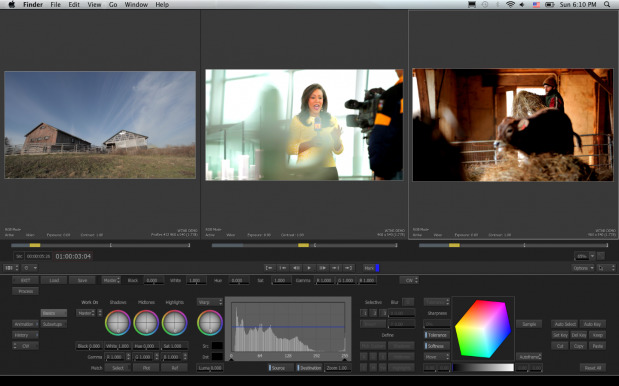
So, I've spent a lot of the last decade thinking, writing, talking and speaking about color. One of the things that I thought would be more clear in talking to creative people about color would be the emotional impact of specific colors.
While colors certainly deliver valuable story and emotional clues, the question among colorists and directors of photography is whether a specific color provides a specific emotional cue that is the same for all people. Most colorists believe that color cues are dependent on context and culture.
I've read that for Scandinavians, cool colors are more romantic, and the forced warmth of “Hollywood” romance goes against their cultural color values. Similarly, while Americans might think yellow could indicate cowardice, for Asians, yellow is a heroic color. The Chinese consider yellow the most beautiful of all colors. Another common difference is black as the color of mourning in “the West” while white serves the same purpose for China and many other Asian cultures.
Berit Bergström is the Managing Director of the Scandinavian Color School and President of the International Color Association. She says that pastels have been big with Scandinavians since the early 1800s, but certain specific hues may be part of the culture.
In addition to cultural differences, many of the people I spoke to believed that any color can act as a cue for any emotional or story point as long as the audience was clued in to the meaning of the color. This is similar to musical cues where the audience is shown a character or emotion and then the musical cue can act as a reference for that emotion or character throughout the rest of the movie. The counter argument for this widespread belief amongst the people I have interviewed is an entire tome devoted to the color cues of Hollywood called “If It's Purple, Someone's Gonna Die.” This book is one of the bibliographic references in my book, “The Art and Technique of Color Correction.” The book purports that it can help filmmakers make “the right color selections for their films, and helps movie buffs understand why they feel the way they do while watching movies that incorporate certain colors.”
Despite the ambiguity of color cues, marketers are much more convinced that these cues deliver emotional and psychological payloads that can influence audiences in very specific ways.
Here is a personally curated list of websites that provide information on the psychology of color. The first two links have very nice infographics. Note that the infographics are designed for interior decorators and graphics designers, not necessarily film and video professionals.
Psychology of Color Infographic
Another Psychology of Color Infographic
After the two infographics are several links on the psychology of color.
Psychological Effects of Color
Psychological Properties of Color
The fifth link is very interesting, addressing the preferences for certain colors.
And if you haven't had enough color reading, here are three more links that are not quite of the quality of the others, but you may find something in here that speaks to you.

